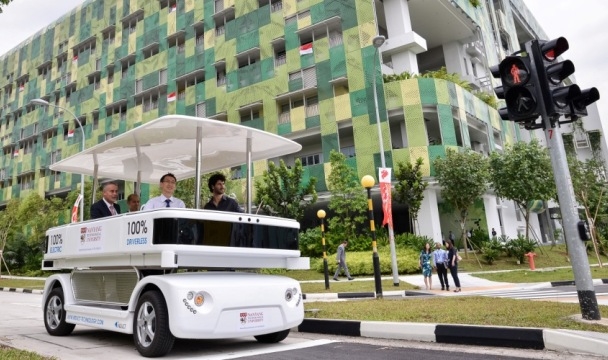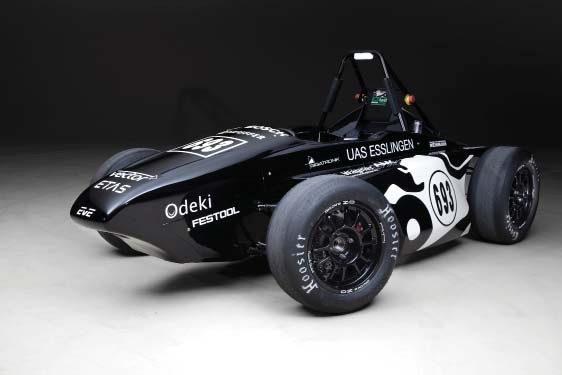MINNEAPOLIS / ST. PAUL (09/04/2013) —A new collaboration between industry and academia is set to harness the energy of New York City’s East River. The University of Minnesota’s St. Anthony Falls Laboratory announced the launch of a new project that will advance research, innovation and training in marine and hydrokinetic technology, an emerging renewable energy that harnesses the power of rivers, tides and waves.
Developed around the nation’s first federally licensed installation of a commercial tidal power turbine system array—the Roosevelt Island Tidal Energy(RITE) Project in New York City’s East River—the effort combines the University of Minnesota St. Anthony Falls Laboratory’s cutting-edge computational modeling and experimental techniques with the industry expertise and unique field facilities of RITE Project lead, Verdant Power, Inc. (New York, NY), and the materials science and manufacturing strengths of Energetx Composites, Inc. (Holland, MI). The project is funded by a two-year, $600,000 grant from the National Science Foundation, through its Partnerships for Innovation: Building Innovation Capacity program.
The overall goal of the project is to promote the growing marine and hydrokinetic industry by enhancing the performance and resilience of the technologies used while ensuring environmental compatibility. In addition, the project aims to build the marine and hydrokinetic technology workforce through the development and pilot of technological and entrepreneurial curriculum in a four-year hydrology degree program at tribal college, Salish Kootenai College (Pablo, MT).
"This project will enable St. Anthony Falls Laboratory research to help industry partners succeed in developing a very high-profile marine and hydrokinetic resource, one that will supply renewable electricity to New York City," said Fotis Sotiropoulos, the project leader and director of the St. Anthony Falls Laboratory who is James L. Record professor of civil engineering in the University of Minnesota’s College of Science and Engineering. "This partnership strategically positions our St. Anthony Falls Lab to spearhead the development and growth of marine and hydrokinetic renewable energy technology to support the national goal of 80 percent of U.S. electricity produced from clean energy sources by 2035."
Researchers at the University of Minnesota St. Anthony Falls Laboratory will develop a high-performance computing simulation toolbox to provide industry partners an in-depth understanding of how turbines perform in and interact with real-life aquatic environments. Combining high-resolution simulations of turbine interactions in complex flow environments and aquatic ecosystems with site-specific water flow, streambed and ecosystem data from the RITE Project installation, researchers will use massively parallel supercomputers to: 1) design and test the next generation of marine and hydrokinetic turbine rotor blades for reliable and efficient operation; and 2) optimize the layout of Verdant’s pilot-scale 30-turbine, 1.05MW array at the East River site.
"This unique partnership brings together forward-thinking research and innovation around tidal and river current energy opportunities for the U.S.," said Dean Corren, Director of Technology, Verdant Power, Inc. "The tools produced at SAFL allow us to make significant strides toward enhancing the technology for widespread commercial application."
Outcomes from the project support the RITE Project pilot deployment and help to promote industry development, expand the U.S. renewable energy portfolio, and accelerate the deployment of marine and hydrokinetic technologies throughout the nation and world. The educational component of the project is anticipated to serve as a model for implementation in other communities to enhance educational opportunities and produce the next generation of professionals for the marine and hydrokinetic industry.
In addition to Sotiropoulos, other University of Minnesota faculty members who are lead researchers on this project include Michele Guala, St. Anthony Falls Laboratory and Department of Civil Engineering and Henryk Stolarski, Department of Civil Engineering.
Learn more about SAFL’s marine and hydrokinetic energy research at http://z.umn.edu/tidalpower.
Related Links
Roosevelt Island Tidal Energy Project: http://verdantpower.com/what-initiative/
Saint Anthony Falls Laboratory: http://www.safl.umn.edu/
College of Science & Engineering: http://cse.umn.edu/index.php















